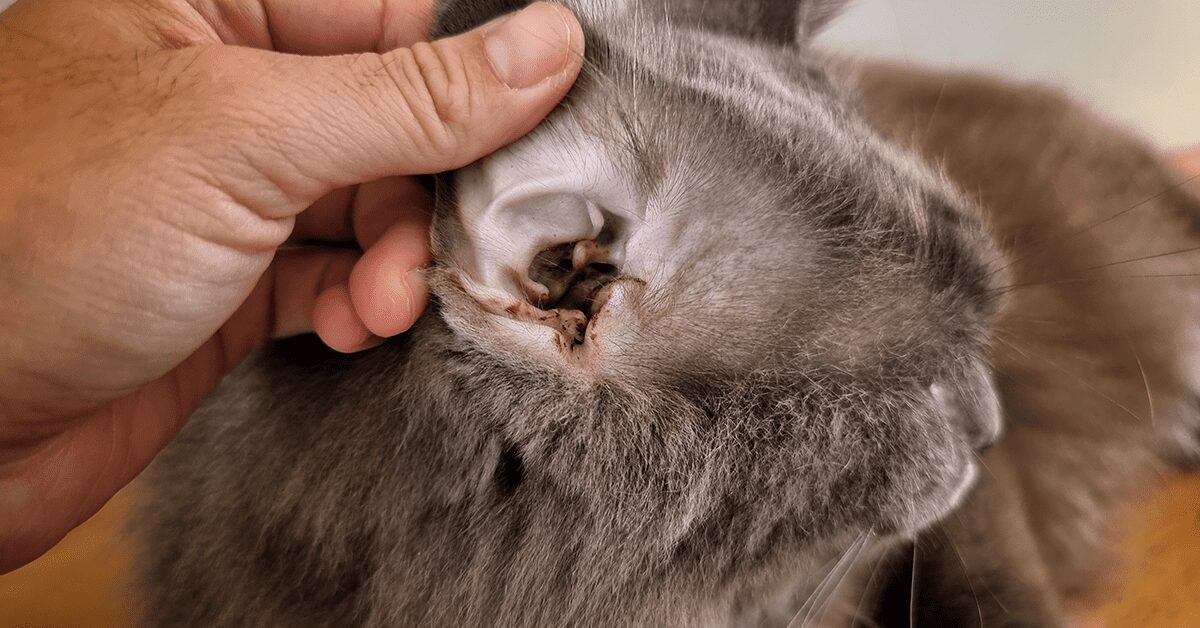
10 Alarming Signs of Ear Mites in Cats (with Pictures) – How to Treat and Prevent
Ear mites in cats are a common yet distressing issue for both pets and their owners. These tiny parasites can cause severe discomfort and lead to serious health problems if left untreated. In this guide, we’ll explore how to identify ear mites in cats with pictures, understand the symptoms, discover effective treatments, and learn prevention tips to keep your feline friend healthy and happy.
Identifying Ear Mites in Cats: What to Look For
Recognizing ear mites in cats early can prevent a lot of discomfort and potential complications. Here are the key signs to watch for:
- Excessive scratching at the ears
- Frequent head shaking
- Dark, crumbly discharge resembling coffee grounds
- Redness and swelling inside the ear
- Strong, unpleasant odor from the ears
- Visible mites or tiny white specks moving in the ear canal
- Scabs or sores around the ears
For a visual guide, refer to the pictures below:


Common Symptoms of Ear Mites in Cats
Ear mites cause a range of symptoms, often making your cat visibly uncomfortable. Here are some common symptoms you might notice:
- Intense Itching: Your cat may scratch their ears frequently, sometimes to the point of causing wounds.
- Head Shaking: Repeated head shaking is a sign your cat is trying to relieve discomfort.
- Ear Discharge: Look for a dark, crumbly substance in your cat’s ear canal.
- Inflammation: Redness and swelling inside the ear are common with ear mite infestations.
- Ear Odor: A strong, foul smell often accompanies ear mite infections.
Effective Treatments for Ear Mites in Cats
Treating ear mites promptly can save your cat from a lot of pain and prevent further health issues. Here are some effective treatments:
- Topical Medications: Products like selamectin (Revolution) or moxidectin (Advantage Multi) are commonly used.
- Ear Drops: Over-the-counter ear drops specifically designed for mites can be effective.
- Cleaning the Ears: Regular ear cleaning with a vet-recommended solution helps remove mites and debris.
- Veterinary Care: For severe cases, professional treatment and guidance from your vet are crucial.
Always follow your vet’s advice and complete the full course of treatment to ensure all mites are eliminated.
Prevention Tips: Keeping Ear Mites at Bay
Prevention is always better than cure. Here are some tips to prevent ear mites in your cat:
- Regular Check-ups: Regular vet visits help catch potential issues early.
- Ear Hygiene: Keep your cat’s ears clean and dry.
- Avoid Contact: Keep your cat away from other animals with known infestations.
- Use Preventatives: Monthly topical treatments can help prevent ear mites.
- Environment Control: Regularly clean your cat’s bedding and living areas.
FAQs about Ear Mites in Cats
What do ear mites look like in cats?
Ear mites are tiny, white, and can be seen moving in the ear canal. The discharge they cause is dark and crumbly, resembling coffee grounds.
Are ear mites contagious to humans?
While ear mites primarily affect animals, they can occasionally cause minor skin irritations in humans. It’s best to handle infestations promptly to minimize any risk.
Can ear mites cause deafness in cats?
If left untreated, severe infestations can lead to complications like ear infections that might impact hearing. Early treatment prevents such outcomes.
How can I clean my cat’s ears at home?
Use a vet-recommended ear cleaning solution and gently clean your cat’s ears with a cotton ball. Avoid using cotton swabs, which can push debris further into the ear canal.
How long does it take to get rid of ear mites in cats?
With proper treatment, ear mites can be eliminated in about three weeks. It’s important to follow the full course of treatment to ensure all mites are eradicated.
Can I use olive oil to treat ear mites in cats?
While olive oil can help soothe irritation and smother some mites, it’s not a replacement for veterinary treatments. Always consult your vet for the best treatment options.
Conclusion
Ear mites in cats can be a distressing problem, but with the right knowledge and prompt action, you can effectively manage and prevent infestations. Regular check-ups, good ear hygiene, and preventive treatments are key to keeping your feline friend healthy and comfortable. Remember, when in doubt, always seek professional advice from your veterinarian to ensure the best care for your pet.
For more information on treatments and medicines, check out our detailed guides:
